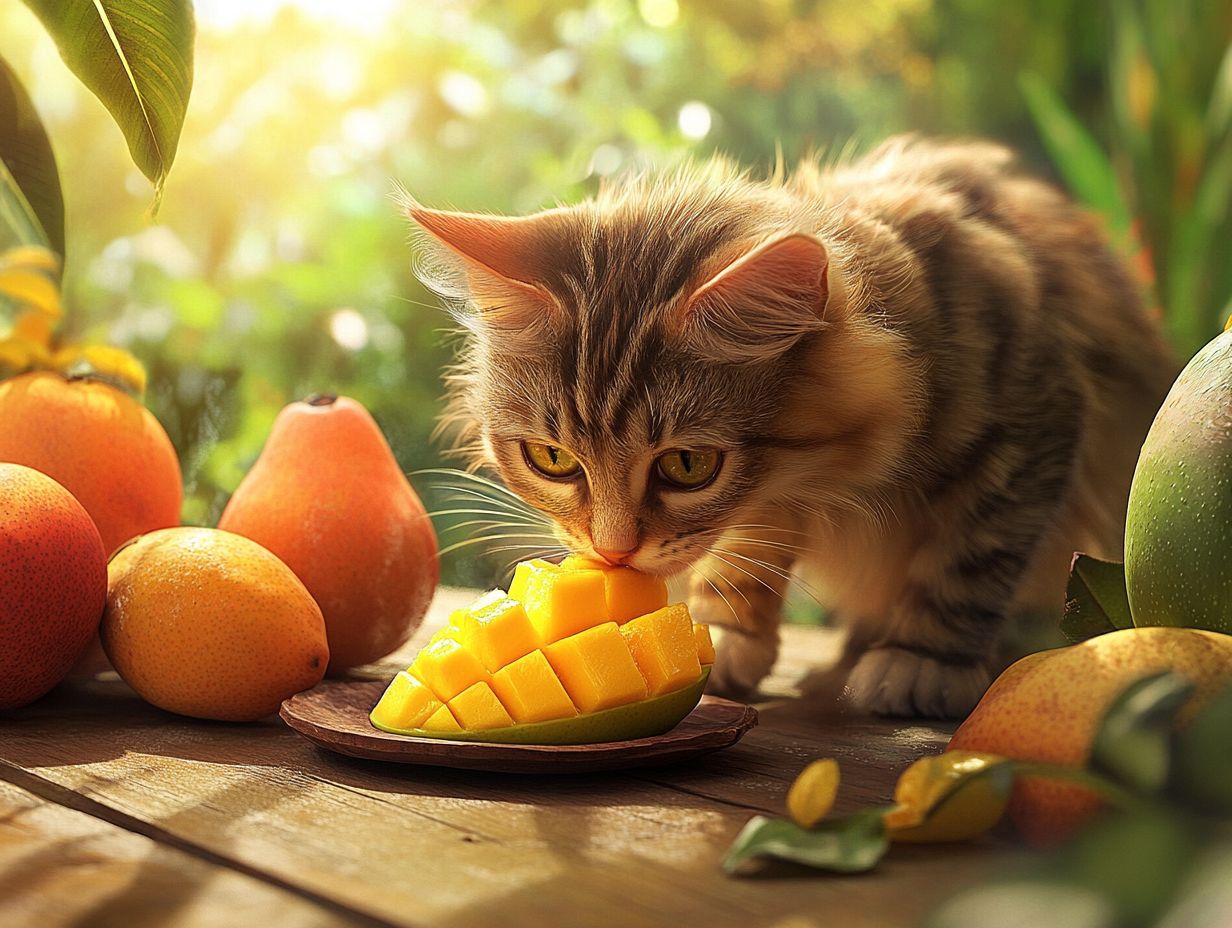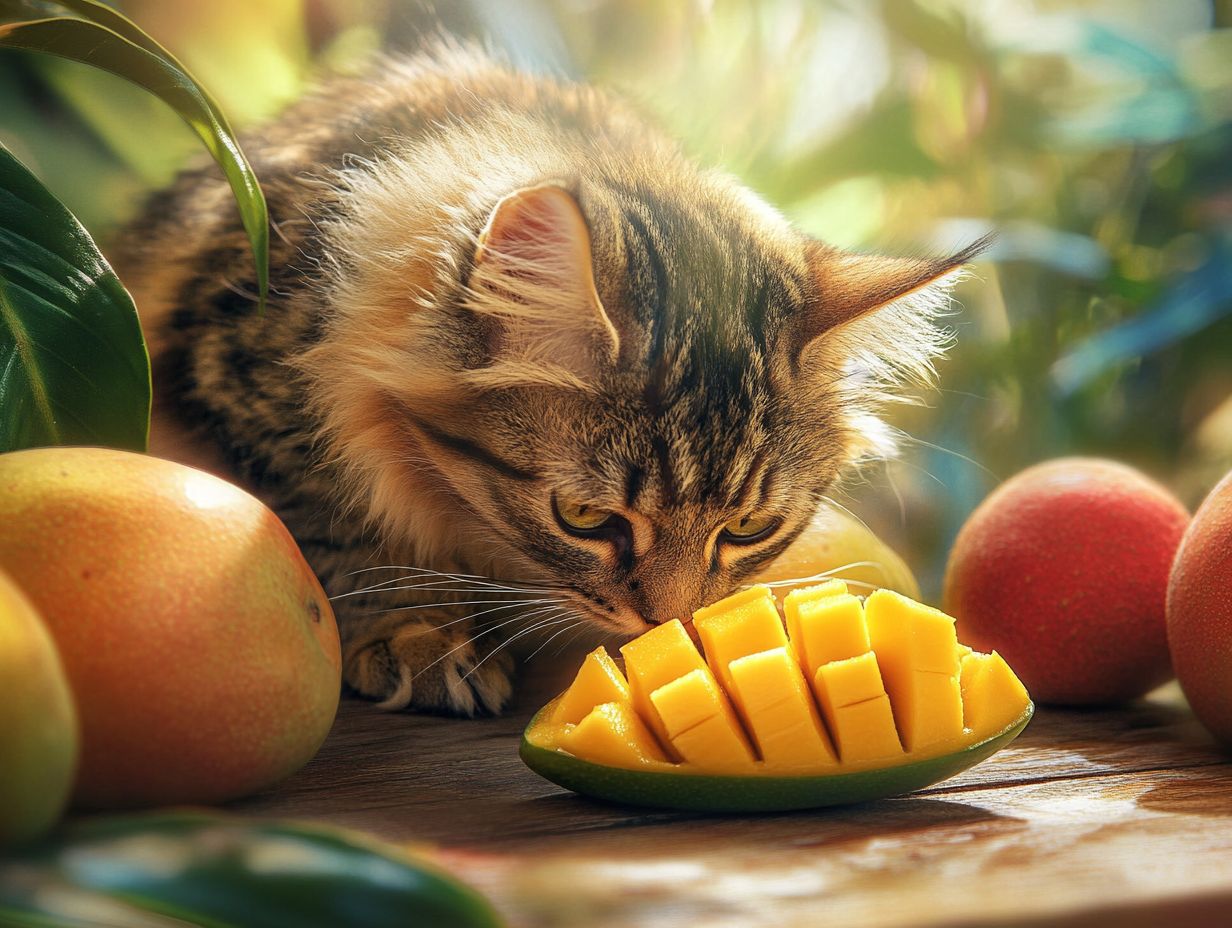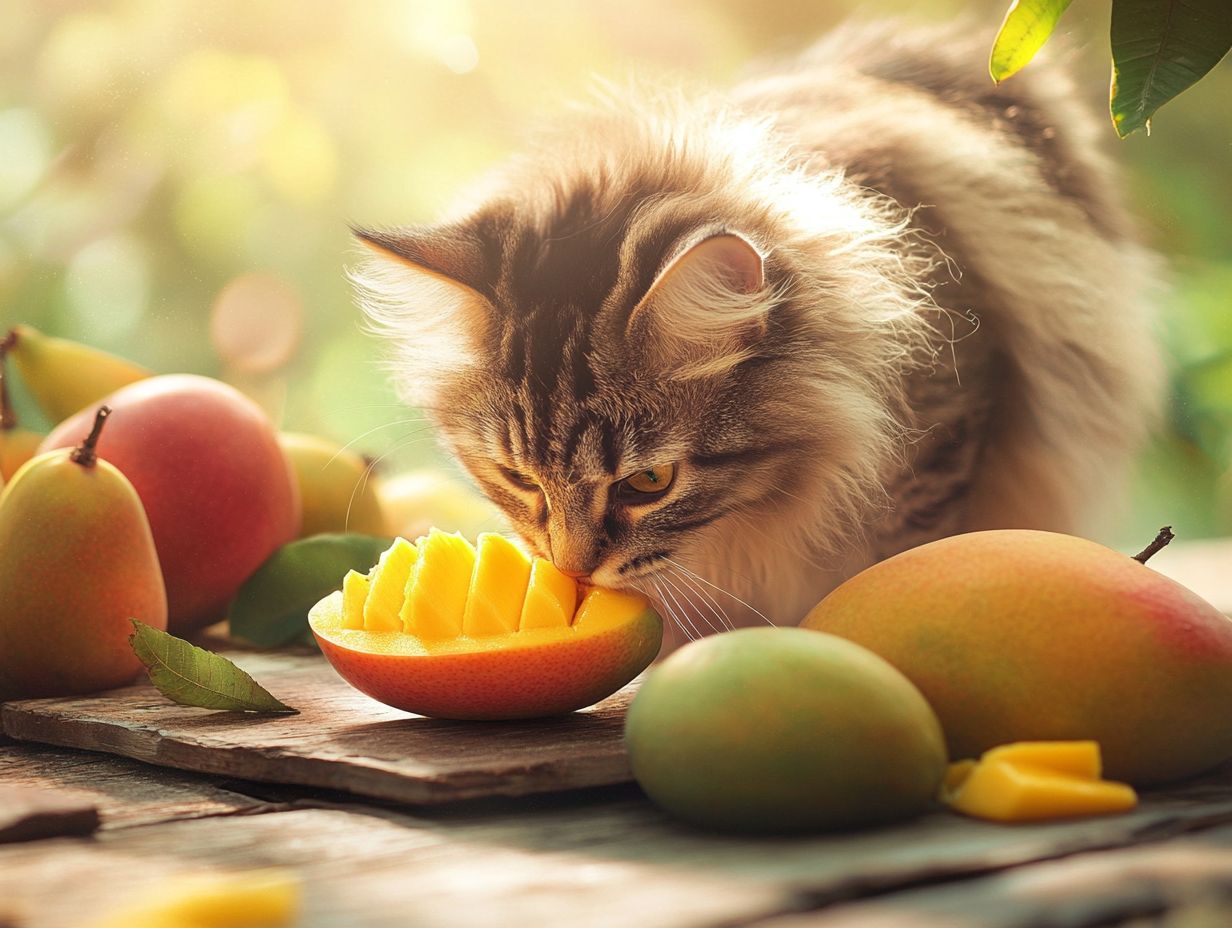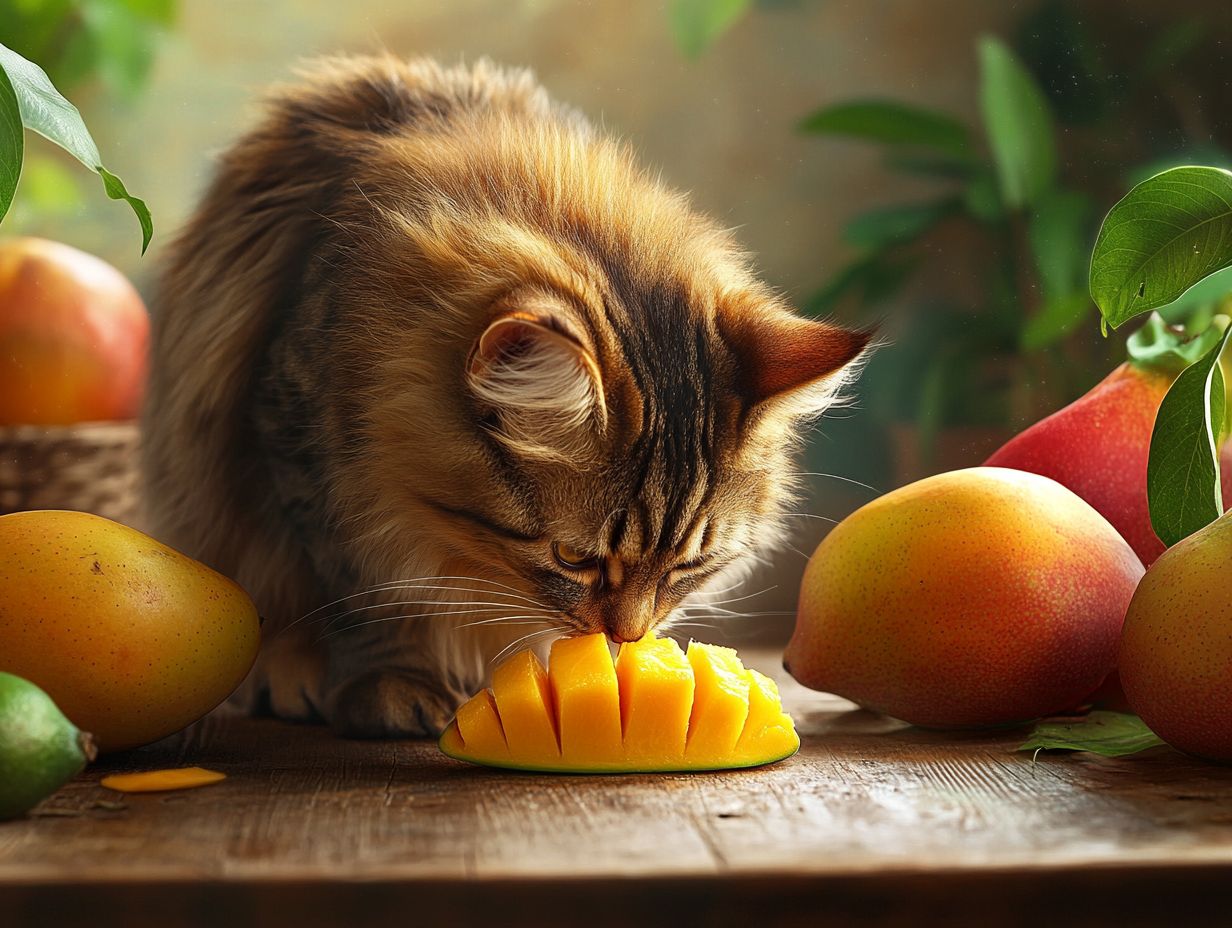Can your cat safely enjoy mango? This tropical fruit has garnered attention for its delicious sweetness and nutritional perks, but is it safe for your feline friend? In this article, we’ll explore the nutritional value of mango, potential allergic reactions, and safe feeding guidelines to keep your cat healthy and happy.
We also suggest some safe fruit and veggie alternatives, such as blueberries, bananas, and cooked, unseasoned potatoes, to ensure mealtime remains tasty and safe! Stay tuned for insights that can help you make informed choices for your furry companion.
Key Takeaways:

- Mango provides essential nutrients beneficial for cats, including vitamins A, C, and B6, along with fiber and antioxidants.
- Some cats may experience allergic reactions to mango; introduce it slowly and monitor for signs of discomfort or illness.
- Feed mango in moderation, as excessive amounts can lead to digestive issues. A small piece, about the size of a pea, is a safe serving.
- If your cat dislikes mango or reacts negatively, many other fruits and vegetables can offer similar benefits without risks.
The Nutritional Value of Mango for Cats
Understanding the nutritional value of mango for cats is essential, as it offers numerous health benefits, important vitamins, and moisture content. While mango is generally safe for cats, it should be offered in moderation and with consideration for its texture and potential choking hazards. Remember, cats are obligate carnivores, needing animal-based proteins primarily.
Experts, including Chad Taylor from Daily Paws, suggest that including fruits like mango can provide a tasty treat that enhances your pet’s overall nutrition.
Health Benefits of Mango
Mango is a nutritious fruit packed with vital nutrients, particularly vitamin C, which supports a cat’s immune system. Additionally, mango is rich in vitamin A and several B vitamins, which are essential for maintaining healthy skin and fur and promoting good vision.
Moreover, the hydration from mango can be beneficial, comparable to that of watermelon or strawberries, especially in warmer weather.
Feeding Guidelines
Mango can be a healthy snack for cats, but potential dangers, like choking and allergic reactions, must be considered. Always remove the pit and skin before offering mango to your cat.
Excessive consumption may lead to issues such as diabetes or heart disease due to high sugar content, so moderation is essential.
Possible Allergic Reactions

Some cats can have allergic reactions to mango, showing symptoms ranging from mild to severe, like itching, swelling, vomiting, or diarrhea. Start with a small amount and monitor your cat for 24 hours to identify any reactions.
If you suspect an allergic reaction, consult a veterinarian for tailored recommendations and treatments. Gradually introducing new foods helps in identifying any adverse reactions promptly.
Conclusion
While mango can be a tasty and nutritious treat in moderation, always prioritize your cat’s health and consult a veterinarian with any concerns. Proper portion control ensures that this sweet treat remains a safe addition to their diet.
For further information, check out Can Cats Eat Mango? Is It Safe for Cats to Eat?.
It’s vital to account for your cat’s size and overall nutritional balance when introducing mango into their diet.
Portion Control and Frequency
When feeding mango to your cat, consider portion size and frequency. Individual needs may vary based on weight and overall health.
- Smaller cats may require a teaspoon of mango as an occasional treat.
- Larger cats might enjoy up to a tablespoon.
Emphasize that these fruity snacks should be infrequent, ideally comprising no more than 10% of their daily caloric intake.
Alternatives to Mango for Cats
According to a PetMD article on fruits for cats, there are many safe options that provide essential vitamins and minerals. Some include:
- Blueberries
- Bananas
- Watermelon
These fruits can be offered as occasional snacks to help maintain your cat’s health while introducing new tastes.
Other Fruits and Vegetables Safe for Cats

Cats can enjoy various fruits and vegetables, like blueberries, strawberries, and broccoli, which provide unique health benefits. Blueberries contain antioxidants, strawberries are rich in vitamin C, and broccoli offers essential vitamins like K and C.
Prepare these foods properly by washing and cutting them into small pieces to prevent choking. When introducing new foods, do so gradually and monitor for any negative reactions.
Risks of Feeding Mango to Cats
While mango can be a healthy treat, potential risks include:
- Gastrointestinal upset
- Allergic reactions
- Choking hazards from the pit and skin
Introduce mango gradually to avoid digestive issues.
Final Thoughts and Recommendations
Mango can be a healthy treat when offered in moderation with awareness of potential risks. For more information, check out this article on whether it’s safe for cats to eat mango.
Always consult a veterinarian before adding human foods like mango to your cat’s diet to ensure their nutritional plan remains balanced.
Frequently Asked Questions
Can cats eat mango?
Yes, cats can eat mango in moderation.
Is it safe for cats to eat mango?

Yes, mango is safe for cats, but it should be given in small amounts as an occasional treat.
What are the benefits of feeding mango to cats?
Mango is a delicious fruit that contains various vitamins beneficial for cats, including vitamins A, C, and E, potassium, and fiber. However, be mindful of potential risks and preparation methods to ensure safety.
Risks of Feeding Mango to Cats
While mango is not toxic, overconsumption can lead to gastrointestinal issues. Always offer it in moderation; a safe portion is no more than a teaspoon.
Guidelines for Safe Feeding
Ensure mango is ripe and cut into small, bite-sized pieces, removing the skin and seed to avoid choking hazards. Consult your veterinarian if your cat has known food allergies.
Conclusion
In summary, mango can provide health benefits for cats, but moderation and caution are key. Always check with your veterinarian before introducing new foods to ensure they align with your cat’s health needs.